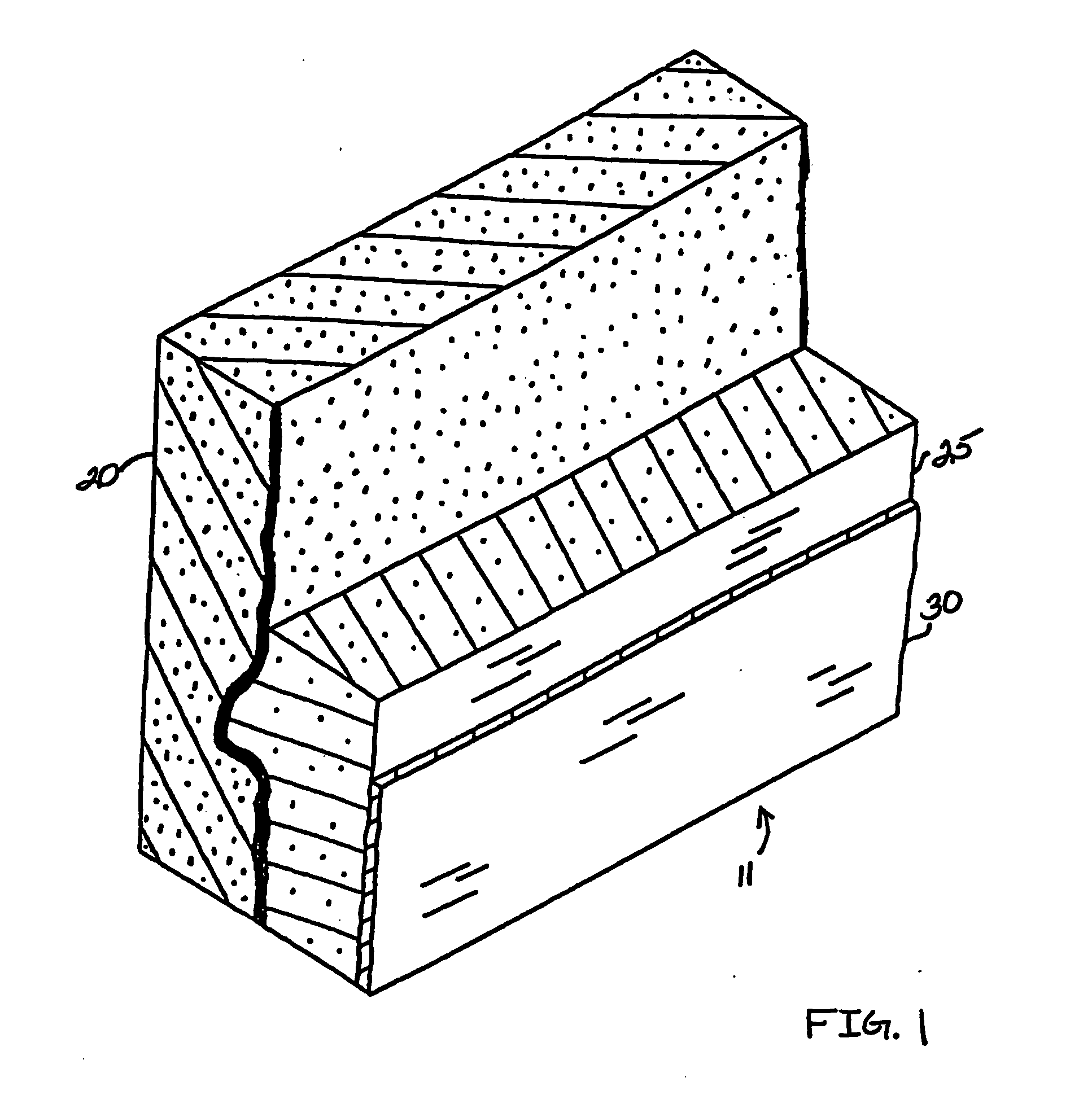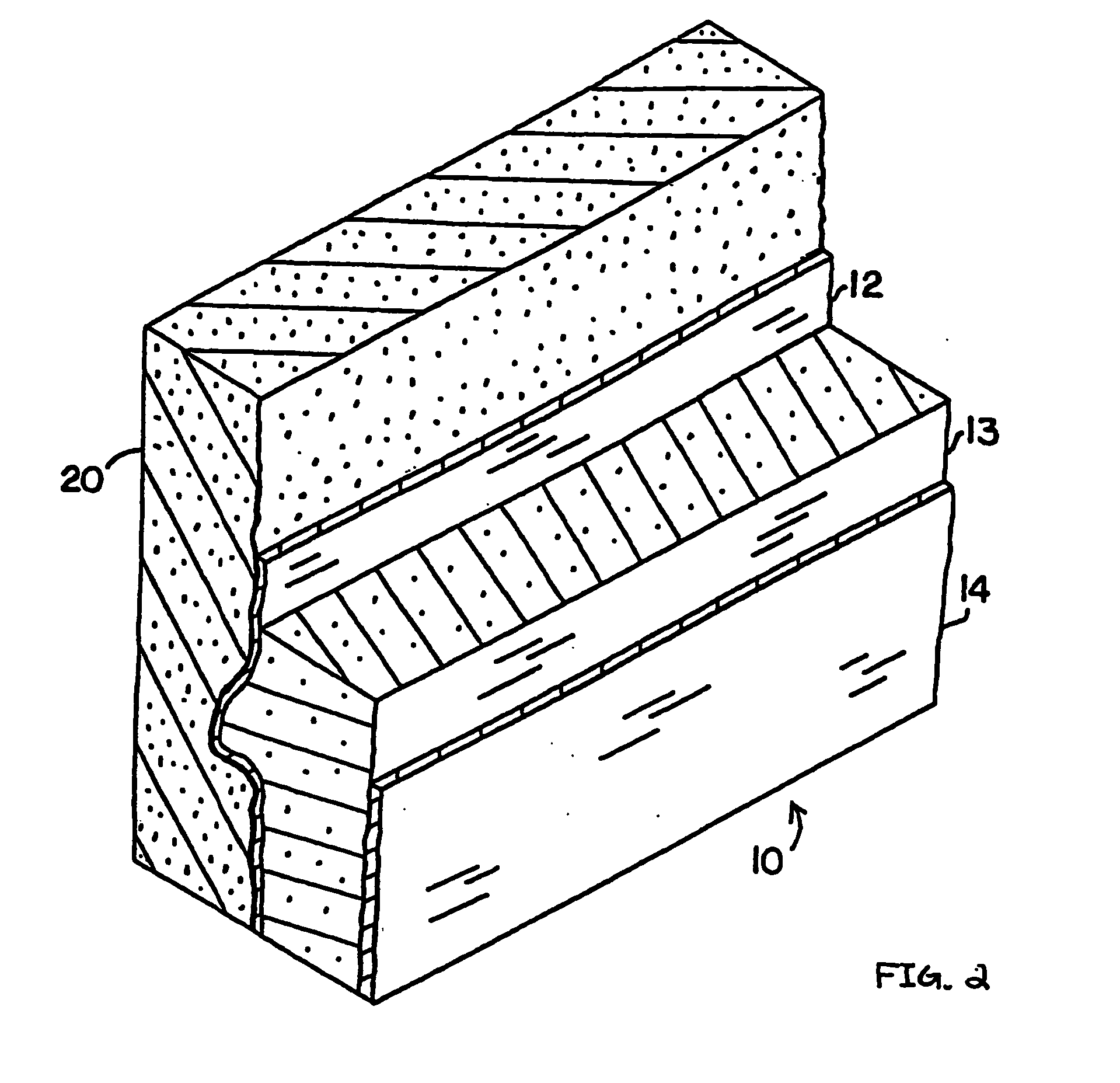Liner for waste water system rehabilitation
a waste water system and liner technology, applied in the field of rehabilitation or repair can solve the problems of deterioration of waste water system components, catastrophic damage to clean-up and repair costs, and components that develop leakage, cracks and holes, etc., and achieve the effect of rapid curing of materials
- Summary
- Abstract
- Description
- Claims
- Application Information
AI Technical Summary
Benefits of technology
Problems solved by technology
Method used
Image
Examples
first embodiment
[0022] In the invention, the substrate surface 20 is initially prepared using high pressure water or abrasive sand blasting to remove all hard contaminants, any micro-organisms or living matter such as mold, mildew, etc., and any loose degraded materials of the substrate itself. The substrate surface 20 is then dried using heat. This drying process eliminates the need to use a primer to treat the substrate surface, as in the prior art. The surfacer layer 25 is applied directly to the substrate 20. The heat to dry the substrate surface can be supplied by any means known in the art. The abrading and drying steps result in a clean surface with an optimized surface for adhesion of the liner. Where an epoxy is used as the surfacer layer, the substrate surface need not be dried prior to application of the surfacer layer. Next the surfacer layer 25 is spray-applied using conventional compressed air spraying devices. In one embodiment, the surfacer layer 25 is preferably composed of a polyu...
second embodiment
[0027] The liner of the second embodiment is a stressed skin panel, comprised of a structurally rigid foam internal layer bounded by two adhered surface layers—first moisture barrier layer and second moisture barrier layer—which are under stress due to the rapid cure rate of the material when applied. This rapid cure time does not allow internal stresses created by the small amount of shrinkage during curing to be relaxed, as occurs in sprayed films with long cure times. The principles of stressed skin panels, well known in the construction industry for walls of large buildings, provide for a structural member with increased structural strength and integrity of multiple factors beyond that of the individual components taken separately. Thus, the combination of the stressed skin panel created by the multi-layer combination of first moisture barrier layer, foam internal layer and second moisture barrier layer adhered to the waste water system component results in a repaired component ...
PUM
| Property | Measurement | Unit |
|---|---|---|
| thickness | aaaaa | aaaaa |
| rise time | aaaaa | aaaaa |
| rise time | aaaaa | aaaaa |
Abstract
Description
Claims
Application Information
 Login to View More
Login to View More - R&D
- Intellectual Property
- Life Sciences
- Materials
- Tech Scout
- Unparalleled Data Quality
- Higher Quality Content
- 60% Fewer Hallucinations
Browse by: Latest US Patents, China's latest patents, Technical Efficacy Thesaurus, Application Domain, Technology Topic, Popular Technical Reports.
© 2025 PatSnap. All rights reserved.Legal|Privacy policy|Modern Slavery Act Transparency Statement|Sitemap|About US| Contact US: help@patsnap.com



